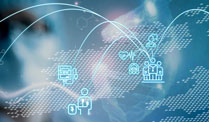Posterior Lumbar Fusion
Contact Us
Request an AppointmentPlease note that a referral letter is required before an appointment can be confirmed.
Please note that a referral letter is required before an appointment can be confirmed.
Useful Information
About the service
Spinal fusion is a surgery that permanently connects two or more vertebrae in your spine into a single, solid bone. This eliminates painful motion between them.
Spinal fusion can be a very good treatment for some spinal conditions; however, it does not return your spine to “normal” as the normal spine has some degree of motion between vertebrae.
Spinal fusion may be performed for a variety of different reasons including:
- Lumbar spinal stenosis
- Lumbar degeneration (wear and tear) of the spinal structures leading to narrowing of the spinal canals
- Lower limb radiculopathy and neurogenic claudication
- Treatment of fractured (broken) vertebrae
- Correction of deformity
- Spinal curves such as scoliosis
- Spondylolisthesis is a condition whereby one of the vertebra in the lower part of the spine slips forward or backward compared to the next vertebra
- Elimination of painful movement
- Treatment of instability
- Treatment of some disc herniations or bulge
Extreme Lateral Interbody Fusion (XLIF)
Extreme lateral interbody fusion: This is a keyhole (minimally invasive) spinal fusion, which is performed from the side. This type of spinal fusion may be suitable for patients who previously had multiple back operations as it avoids scar tissue and improves the capacity of the spinal canal (indirect decompression). Depending on the patient's needs, the lateral approach may be supplemented with posterior pedicle screw fixation.
Cortical Lumbar Pedicle Spine Fusion
Cortical lumbar pedicle spine fusion is a new concept of spine fusion that involves keyhole (minimally invasive) spine fusion, minimal muscle dissection and minimal blood loss. It is generally a good approach for patients with weak bones (osteoporosis/osteopenia). Cortical Lumbar Pedicle Spine Fusion has no significant post operative pain, and enables early mobilisation, and early discharge.
What to expect
There are a number of things you can do to prepare yourself for spinal surgery. In the weeks before your surgery, it is advisable to eat a balanced diet as this can help the healing process.
If you smoke, stop as far in advance of surgery as possible. Smoking may cause complications with the anaesthetic and nicotine can delay or interfere with healing and bone growth (smoking can also lead to mechanical implant failure).
As there are many restrictions to various daily activities immediately following spinal fusion surgery, most people find that preparing for their post-operative recovery before admission to the hospital is helpful.
Pre-operative assessment clinic
Within one month (ten days to one week) of your operation, you may be invited to attend the pre-operative assessment clinic.
During this visit, you will be asked about your medical history and any medications you are taking.
You will have blood tests done and may have an electrocardiogram (ECG) and x-ray.
This clinic is also an opportunity for you to ask any questions you may have and to plan for your discharge from hospital.
If you have a history of MRSA or have been in contact with someone with MRSA, please let us know as soon as you have a surgery date. We will need to take some swabs to ensure you do not have any MRSA that might get into your wound at the time of surgery.
Bone grafting
Spinal fusions use some type of bone material, called a bone graft, and place it between the vertebrae to stimulate bone healing and help the vertebrae to fuse together.
Immobilisation
Following bone grafting, metal implants, such as plates, screws, or cages, are often used to secure the vertebrae to hold them together and help the fusion process.
When your surgery is completed, you will be moved to the recovery room where you will be observed and monitored by a nurse until you awake from the anaesthetic. You will then be transferred to a ward where the ward team will work closely with you to aid your recovery.
You will have a drip for intravenous fluids through a vein into your arm or hand which will continue for a number of hours after your surgery. You may eat when you are fully awake but we advise that you start with sips of water and then a light meal.
You may have a catheter inserted into your bladder to make urination easier. There may be a drain tube in your back which is normally taken out one to two days after surgery.
The immediate discomfort following spinal fusion is generally greater than with other types of spinal surgery. Fortunately, there are excellent methods of pain control available for after your surgery and your anaesthetist and nurse will work closely with you to manage your pain.
You will get out of bed and on your feet the day after surgery. This is safe and it is the best way to get your muscles moving and prevent post-operative complications. A nurse or physiotherapist will be with you to advise you on how to move your back carefully and comfortably.
Depending on what technique is used you may be fitted for a brace.
Recovery following fusion surgery is generally longer than for other types of spinal surgery. Patients normally stay in hospital for four to six days (two to four days for robot fusions) but a longer stay after more extensive surgery is not uncommon. You will gradually increase your movement over your stay.
You will not be discharged until all the members of the team who treated you are confident that you are well enough. Elderly or debilitated patients who are having extensive surgery may wish to consider convalescence.







.jpg?sfvrsn=bc97231b_1)


